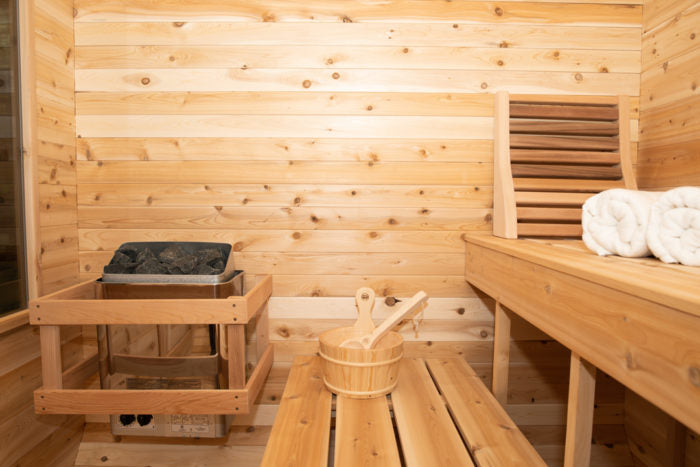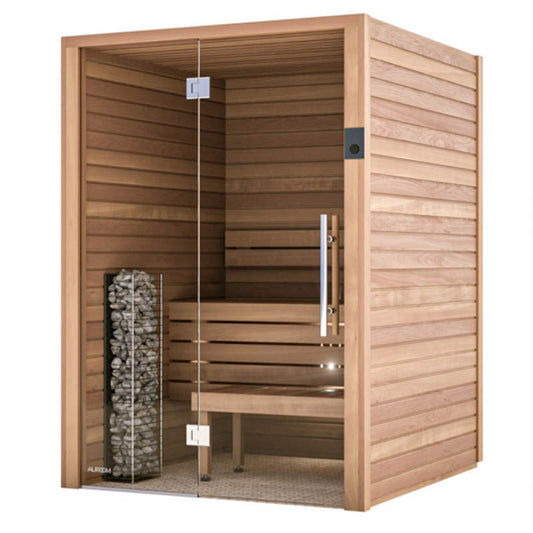The 15-Second Trick For Traditional Sauna
The 15-Second Trick For Traditional Sauna
Blog Article
See This Report on Traditional Sauna
Table of ContentsWhat Does Traditional Sauna Do?Getting My Traditional Sauna To WorkGetting The Traditional Sauna To WorkWhat Does Traditional Sauna Mean?Getting The Traditional Sauna To Work
A lot of the weight shed in a sauna is water loss and is re-gained upon rehydrating. Without a doubt sauna can be an essential part of a healthy and balanced weight loss program. To check out the differences in between standard and IR saunas, I will certainly divide these right into proven, academic, and fabricated differences.Hence, the most popular factor in the saunawhich goes to the ceiling straight over the sauna heateris typically in between 185 and 190 F. Claims that a typical sauna surpasses 200 F is simply not real and not appropriate for electric saunas offered in the US. The temperature level for a far-infrared sauna is generally set between 120 and 140 F; nonetheless, unlike the typical sauna, the objective in and IR room is not to achieve a heat.
Because of this, the temperature level distinction is nearly pointless, given that excessive sweating results in both sauna types, but the technique of warming the body is different. In an IR sauna the bather will certainly really feel hot and will certainly sweat a lot, yet at much reduced temperatures (Traditional Sauna). Therefore, if the objective is to spend longer durations of time in the sauna, the IR sauna is a good option
When a conventional sauna has actually been appropriately heated, the sauna walls are warm, the air temperature level has actually attained established temperature level and the rocks are incredibly warmed. As an intriguing side note, the warmed walls and the rocks are giving off far-infrared warmth, combined with the heated air, to develop an "wrapping up heat".
What Does Traditional Sauna Do?

When the high temperature is accomplished, the aspects cycle on and off to preserve the heat. Most conventional sauna users take pleasure in pouring water over the rocks to create heavy steam to elevate sauna humidity levels. The benefits of pouring water over the rocks include: making the area more comfortable, dampening the nasal passages, and allowing the use of aromatherapy by mixing necessary oils with the water.

When the energy enters the body, it triggers the body temperature to boost and inevitably leads to perspiration. In an infrared sauna it is necessary for the emitters/heaters to remain on virtually constantly. Since there is no mass of rocks to keep heat, the sauna will certainly cool if the emitters shut off.
As pointed out above, the sauna bather in an infrared room wants to place himself in front of operating emitters to get maximum gain from the warmth. The heating time for the 2 rooms can be very different, depending on exactly how the rooms are used. For a traditional sauna, visit the site a bather needs to permit 30-40 minutes for the room to attain a desired temperature level and to appropriately pre-heat the rocks.
The smart Trick of Traditional Sauna That Nobody is Discussing
A well constructed sauna will typically achieve a temperature level of 150-160 F in regarding 30-40 minutes. For hotter temperatures, the area may need to warmth for a longer duration.

Standard saunas often tend to be larger (therefore make use of more power) than infrared saunas, although conventional saunas are certainly readily available in one and 2 individual sizes too. For a two-person conventional sauna, 5x6 or 5x7 dimension is most prominent. The leading bench can comfortably seat 2 or three people and is additionally enough time to rest during the sauna session.
Traditional Sauna - Truths
The average expense per kWH of electricity in the united state is roughly $0.11, so a 4.5 kW heating unit will certainly set you back approximately $.50 to run for one hour, if the heater runs continually for one hour. Usually a sauna heating unit will certainly compete 75% of the very first hour and 50% of succeeding hours on given that the aspects cycle once the established temperature level is attained.

Ultimately, there is a seldom talked about distinction in the social experience in between the two rooms. While our culture has actually shed a few of the social benefit of the typical sauna experience, it can be very socially gratifying next (Traditional Sauna). From household time in the sauna, to heart-felt discussions with loved ones, to sauna partiesthe traditional sauna experience can cause intimate interacting socially
The Only Guide for Traditional Sauna
Most higher end infrared areas consist of colored light therapy, sound systems and full-glass fronts.
Report this page